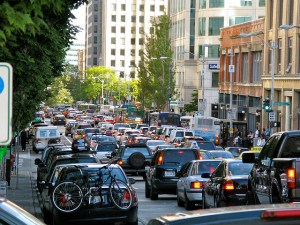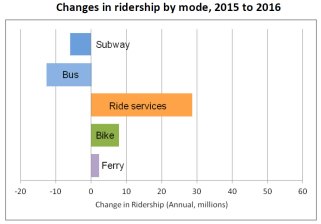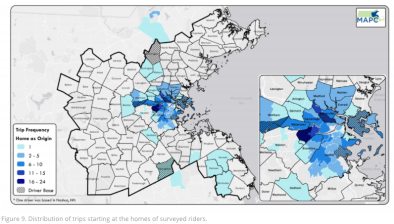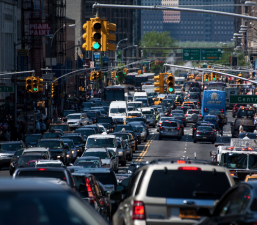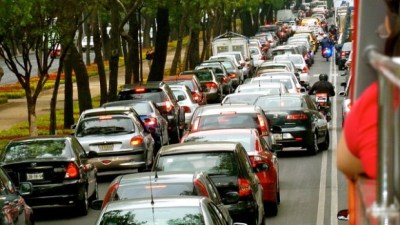Measuring Uber Traffic Would Be Impossible Under Cuomo’s Ride-Hailing Bill

Yesterday, we got a reminder of why transportation planners and transit advocates view access to Uber trip data as an essential tool, when analyst Bruce Schaller published a groundbreaking report on the effect of ride-hailing services on New York City streets and traffic. The growth of app-based ride-hailing services is, in fact, leading to more congestion, Schaller concluded.
Schaller relied on copious trip data from Uber, Lyft, and other companies to produce the report. That same data, however, would not be obtainable under the disclosure provisions currently laid out in Governor Cuomo’s statewide “Uber” bill, which applies to the rest of the state outside of NYC.
In a letter to Assembly insurance chair Kevin Cahill yesterday, John Kaehny of the good government group Reinvent Albany warns that the absence of disclosure rules could have dire consequences for transportation planning in New York state [PDF].
As currently written, both Cuomo’s bill and the State Senate’s bill would require so-called transportation network companies (TNC’s) to maintain seven years of trip records — including date, time, and location for each trip. But state regulators would only be able to visually inspect a “sample” of the data “chosen randomly” twice a year.
Kaehny calls it an “absurd” process that would amount to “an essentially useless charade.”
In New York City, TNC trip information is available on the city’s open data feeds and “has allowed the public to make informed analysis about the impact of TNC’s on NYC traffic and congestion — which appear to be extensive,” Kaehny writes. The Taxi and Limousine Commission just voted to require TNC’s to disclose trip destinations in addition to origins.
That information would not be publicly accessible under the terms of the Albany bills. In addition to clouding the picture in upstate cities, it will be difficult for New York City to assess the extent to which for-hire drivers based in neighboring counties are making trips inside the five boroughs.
Ride-hailing services should be legal throughout the state, but the companies also need to be open with their data so the public can understand their impact on the transportation system.
